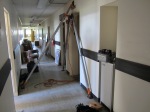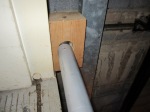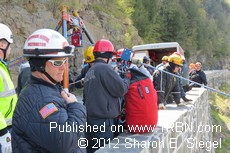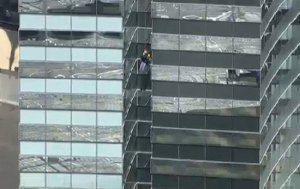It’s obvious that anchors are the key to any successful rope rescue operation, but sometimes they just aren’t where we need them or they aren’t as strong as we’d like. Take a look at the three anchor failure videos below for proof. While there are some slackliners who have an idea of the forces they are putting on their anchors, a lot have no clue. Evidence:
Maritime anchor failure:
If, however, you are interested in a strong portable anchor for your rope or vehicle extrication team, then take a look at the pictures below. James Hurley of Heavy Rescue Solutions has developed an aluminum anchor plate that can be picketed into the ground with three picket. Wrap the handle with webbing and pull away. The plate is roughly 3 feet long and weighs around 25 lbs without the pickets. The pickets can be driven by hand or with an air impact chisel which HRS has developed a special bit for. If driving by and with a sledge, they have developed a fitting to make it less likely to mushroom the head of the picket.
This anchor plate has been pull tested end to end and withstood 44, 000 lbf of force. The ability of the plate to hold a load is clearly dependent on the soil in which the pickets are driven, but early testing R2T did with James was conducted in a moist, loamy soil and the anchor held to around 8000 lbf after it settled in a bit. The newest version of this plate has been revised and James said it can hold quite a bit more than the prototype and with less settling in movement as well. He’s hoping to have everything finalized and ready for production at the beginning of November. If you are interested in the plate or want more information, give James a shout at:
heavyrescuesolutions@gmail.com
















